Double negative







Voters rejected both the Town of Williston and Champlain Valley School District budget proposals Tuesday, compelling both entities to reduce their spending plans for a revote this spring.
The projected increase in property taxes associated with the proposals proved to be more than a majority of voters were willing to take on. It was the first budget defeat in recent town history and the first school budget defeat since the 2017 district merger that created the Champlain Valley School District (CVSD). Roughly 2,800 Williston voters cast ballots in the Town Meeting Day election, about 32 percent of the total registered voter list.
One longtime Williston property owner, interviewed after voting Tuesday, said it was his first time voting against a school budget. He joined 5,090 other voters
throughout the five-town district in voting down the proposal.
“There seems to be a lack of clarity in terms of what the tax implications are going to be for property owners, but what is coming
“It’s not anyone’s fault but the system is not working the way it should.”
Charlie Carpenter
Williston voter
through is that there is going to be a major property tax increase,” said the man, who declined to give his name. “We pay quite a bit already. It just seems it’s always going up.”
CVSD’s $106 million budget proposal would have increased spending about $10 million over the current fiscal year and in-
creased property taxes between 19-26 percent, according to school administrators’ estimates. The spending increase was attributable to a 4-6 percent increase in teacher and staff salaries, a 16 percent increase in staff health insurance costs, the retention of 17 school counselors, social workers and English language tutors that were originally funded through federal pandemic recovery grants, and general inflation.
The associated tax increase was calculated using the most recent statewide school funding formula, tweaked under legislation expedited through the lawmaking process in recent weeks.
“It’s not anyone’s fault but the system is not working the way it should,” voter Charlie Carpenter said Tuesday. “I’m a property owner and I don’t want my taxes to go up 20 percent. I think the whole state needs to take another look at how the system is working.”
The tax increase didn’t sway

voter Kim Hornung-Marcy, who supported the school budget along with 3,391 others in the district.
“I was happy to support education, teachers and kids,” she said. “I’m sorry it’s so expensive, but these are issues that are nationwide — inflation and health care costs — that we don’t deal with on a national level.”
The school board plans to dis-
cuss potential budget reductions at a 6 p.m. meeting at Champlain Valley Union High School on March 12, according to CVSD Superintendent Rene Sanchez. He expects a revote to take place in mid-April.
“While we are disappointed in the election results, we appreciate the insight we gained from our


W illiston Town Band invites musicians to join
Williston’s Town Band has openings for wind and brass instrument players of all ages. Clarinet, saxophone, oboe, bassoon and trombone players are
especially needed. Rehearsals through May take place on Monday evenings and move to Wednesday evenings in June. The next rehearsal is Monday, March 11, at 6:30 p.m. No auditions are required and residents of other towns are welcome.
Performed by Our Graduate Gemologists
Contact Kathy Schaw at willistontownband@gmail.com for more information and to sign up.
The Williston-based Green Mountain Homeschool Robotics team will host a demonstration of its robot and winning innovation project, a stone-carving app for use by the blind and visually impaired, The event takes place at the Dorothy Alling Memorial Library on Friday, March 15 from 4-5 p.m.
is scheduled for 4 p.m. and the boys game for 6 p.m. Tickets are $10 at the door with proceeds benefiting the Essex Rotary Club to support local food pantries, provide winter coats for children in need, fund scholarships for local students and support a number of health and environmental initiatives locally and internationally.
CVU players who were selected to play include are Evie Mae Buford, Nic Menard, Travis Stroh and Alex Zuchowski.
The Richmond Historical Society will be holding its Annual Meeting at 3 p.m. March 10 in the Community Room of the Richmond Free Library.




The team took first place in the Vermont FIRST Lego League championships this year and is headed to Houston, Texas to compete in the World Championships in April.
The 38th Rotary All-Star Hockey Classic is scheduled for Saturday, March 16, at the Essex Skating Facility in Essex with several CVU standouts set to compete.
High school seniors are selected to play from high schools across the state. The girls game
Are you curious about Rotary and live in Richmond?
The Williston-Richmond Rotary club will hold its weekly breakfast meeting at the Richmond Free Library on March 14. The meeting will include a presentation by Wendy de Forest, the Richmond library’s assistant director and youth director. Breakfast will be served at 7:15 a.m. and the meeting will begin at 7:30 a.m. For more information and to RSVP, email rotaryclubofwillistonvt@gmail.com
In addition to a summary of Historical Society activities and the election of officers for 2024, there will be a presentation by Eliot Lothrop, the lead restorationist of the multi-year project to restore the Vermont Youth Conservation Corps’ (VYCC) East Monitor Barn. Built in 1901, the barn is one of the largest dairy barns in the state.
Once the restoration is complete, the barn will house the administrative offices of the VYCC, allowing the West Monitor Barn to be used as housing for young adults participating in the VYCC’s conservation and sustainable agriculture programs.
The meeting is open to all. For more information email rhs@richmondvthistory.org.



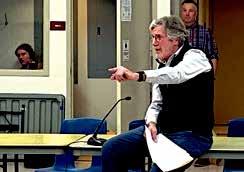

community through the voting process,” Sanchez said in a Wednesday morning statement. “With your vote, and through various other methods, we heard that the community overwhelmingly supports our schools. However, the state education funding formula, which caused our property taxes to increase over 20 percent, was a bridge too far for most. The voices and perspectives from within our schools and from our five towns continue to be essential as we plan for the future direction of our district.”
School board chair Angela Arsenault fielded several budget questions from residents at Monday’s school district and town annual meetings.
“Can we do a little bit better? Can we shave some of the spending? We probably can,” she said in one response. “But we do reach a point where …. because we face a
number of external factors and pressures, we can only do so much and still serve our students, which is bottom line what we need to do as a school district.





“I believe we can come up with a second attempt that still protects our students and employees to the best of our ability,” she added.
The town budget was defeated by a slimmer, but still resounding, margin: 1,4941,285. Two questions on incurring $1.1 million in debt to fund a fire suppression system at the Old Brick Church and Town Hall parking lot expansion with electric vehicle chargers were also defeated.
The town’s $15.3 million budget proposal would have increased spending by $1.37 million (10 percent) over the current fiscal year and increased property taxes by 11.5 percent. Two new staff positions — a police detective and a human resources director — were included in the proposal, contributing to an overall increase in staffing costs
see TOWN MEETING page 5





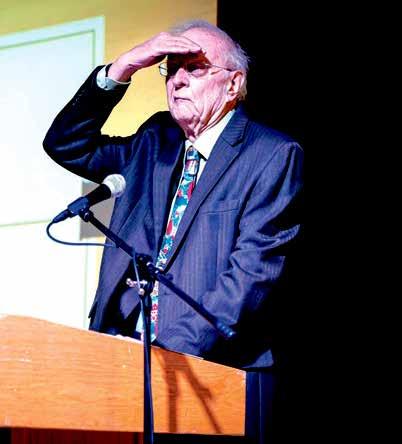

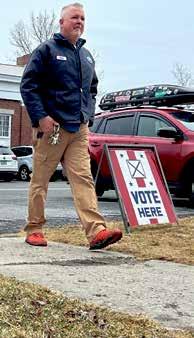
 Emma Mulvaney-Stanak
Emma Mulvaney-Stanak
Emma Mulvaney-Stanak was elected mayor of Burlington on Tuesday, becoming the first woman to hold the city’s top job and shifting control of the office to the Progressive Party after a dozen years of Democratic control.
Mulvaney-Stanak beat out the Democrats’ candidate, longtime city councilor Joan Shannon, by 7,612 votes to 6,696, according to unofficial results from the city clerk.
continued from page 3
of about 15 percent, according to town administrators. The budget also included police equipment leases for new body cameras and tasers.
“(Taxes) aren’t just going up, they are skyrocketing,” resident Roberta Tracy said during Monday night’s town annual meeting and budget discussion at Williston Central School. “Where are we supposed to come up with the money?”
The selectboard is scheduled to meet March 19 at Town Hall to begin taking budget feedback and consider the timing of a revote.
“The outcome of the budget vote at Town Meeting is feedback to the selectboard that the community could not support the town’s municipal services delivery fiscal plan as proposed,” selectboard member Ted Kenney said in a Wednesday morning statement. “This is a challenging fiscal time we are in. My fellow selectboard members and I look forward to hearing from the community as the board works to develop a revised budget proposal to be considered at a Special Town Meeting later this spring.”
Tuesday’s election also served as the
Mulvaney-Stanak lives in the Old North End and runs a consulting business with a focus on community organizing. She represents parts of Burlington in the Vermont House, where she is in her second term and chairs the House Progressive Caucus.
She also previously served as chair of the state Progressive Party.
Mulvaney-Stanak is now slated to replace Mayor Miro Weinberger, a Democrat who has led the city since 2012 but chose not to run again last fall.
Progressives last held the city’s top office between 1995 and 2012 under former mayors Peter Clavelle and Bob Kiss.
— Shaun Robinson/VTDiggerparty primaries for nominations for U.S. President. Voters could choose which primary to vote in — Republican or Democrat — regardless of party affiliation. In Williston, Nikki Haley received 970 votes compared to Donald Trump’s 456 in the Republican primary. Haley carried the state. President Joe Biden won the Democrat primary both in Williston and Vermont.
Also Tuesday, the Champlain Water District received voter approval (13,728-6,225) over the nine communities it serves to repurpose $3.2 million in previously approved borrowed money toward new system-wide monitoring hardware and software.

In uncontested town results, library trustees Diane Downer and Karla Karstens were elected to new five-year terms; Laura Koumjian was elected to a new three-year term on the Board of Listers; Greta D’Agostino and Mike Isham were re-elected to the selectboard; and Brendan McMahon and Sarah Showalter-Feuillette were elected to the school board.
Also, the CVSD proposal to borrow $395,000 for three new school buses passed 4,883-3,569, and to borrow $3.5 million for a variety of school building upgrades passed 4,851-3,568.







What if young men in America and Vermont attended college or continued their training at the same rate as the state’s young women? What if boys and men did not commit suicide or die from overdoses at rates that are significantly higher than girls and women? And what if, by fostering more public discussion about systemic trends in Vermont and the U.S., solutions emerged that benefitted everyone, including women and girls — solutions that continued to acknowledge and embrace action on the corrosive gender discrimination that women and girls continue to face?
This spring — along with the Richard E. & Deborah L. Tarrant Foundation, the University of Vermont, the University of Vermont Foundation, Community College of Vermont, J. Warren and Lois McClure Foundation, the Vermont Student Assistance Corporation and the Curtis Fund — the Vermont Community Foundation is co-hosting an event at the UVM Davis Center
that will explore these issues and feature Richard Reeves, a senior fellow at the Brookings Institution in Washington D.C.
Reeves latest book, “Of Boys and Men,” chronicles the economic and social changes in recent decades that have resulted in declining educational, social and economic engagement for American men and boys. He was the keynote speaker at the Vermont Community Foundation’s 2018 Annual Meeting and also wrote the book “Dream Hoarders,” which helped inform the opportunity gap framework that is central to our work at the Foundation.
His talk at UVM will take place April 4. It is fair to ask: Why this event? Why now?
We at the Vermont Community Foundation approach the idea of closing the opportunity gap with three considerations in mind. First, we know that a community in which people feel the absence of opportunity and hope is a breeding ground for disengagement and discord. We also believe that disengagement has shared economic, social and
civic consequences that have played out over the last decade in the rise of opioid and suicide deaths, increasing extremism and chronic workforce challenges.
Further, we recognize that one of our key roles in the state is to periodically offer a perspective that might otherwise go unstated or unnoticed, because when philanthropy, public policymaking bodies, and educational institutions disregard shared and common experiences, we make a statement of indifference that compounds disengagement and hastens declining faith in the very institutions that are supposed to help our communities.
In our role, it is also important to embrace complexity; multiple things can be true.
Gender discrimination remains stubbornly abundant in the experience of women and
girls in our communities. Look no further than the findings of Change the Story and This Way UP, spotlighted by the Vermont Women’s Fund, or gender gaps in corporate offices and the Legislature to see that. And it is also true that educational performance, labor force participation, college enrollment, and other types of educational continuation among young men have dramatically declined. This is both a national and a Vermont condition.
Nationally, there are roughly three women for every two men enrolled in college. At UVM, there are currently 3,200 fewer undergraduate men than undergraduate women enrolled, in a student body of 11,600. At the Community College of Vermont, serving a very different student body with an average age of 28, enrollment is 72 percent female. Among Curtis Fund scholarship

awardees, the gender split is roughly 70-30, female to male.
This condition exists amid the ongoing work of the Vermont Community Foundation, the McClure Foundation, the Vermont Student Assistance Corporation and the Community College of Vermont to expand access to education for all.
Statistically, we know that continuing education after high school is a pre-condition for economic security. But it’s clear this message does not resonate with everyone. Boys are less likely to pursue education or training, especially if they come from low-income households or identify as a person of color. According to the Common Data Project the VCF funded with other New England community foundations, Vermont’s college continuation rate among boys is 38.5 percent, the lowest in New see SMITH page 9


We want to start with gratitude to the Williston community members who joined us and Sen. Ginny Lyons at the library last Saturday for thoughtful conversations about the challenging issues we face this year on Town Meeting Day — especially education funding and property taxes. In-depth, nuanced conversations are so important for our community and our democracy.
We are approaching the “crossover” deadline in Montpelier, when bills have to pass out of at least one committee and make it through the full House or Senate in order to have a chance at becoming law before we adjourn in May. We want to offer a few highlights related to priorities for many in our community.
The current housing crisis is caused by many factors: zoning that has inhibited denser development in town or city centers; chronic under-investment in rental vouchers and affordable housing; an increase in housing demand linked to a decrease in the average number of Vermonters per household; cumbersome regulatory processes; new economic opportunities presented by converting long-term rental properties into short-term rentals and a 57 percent decline in home construction since 1988.
The Natural Resources Board, the Vermont Association of Planning and Development Agencies and the Vermont Department of Housing and Community Development worked hard, through public engagement processes, to develop rec-
ommendations for updating land use and development planning in three legislatively mandated reports. These reports reach important consensus on overarching goals: encouraging growth, protecting natural resources, increasing the state’s housing stock, modernizing our designation programs and ensuring consistency between municipal, regional and state land use planning policy. We support the work of the tri-partisan Rural Caucus in ensuring that we create legislation that aligns with these
There are so many people in our community who care deeply about our collective future and devote themselves to a range of town positions, boards and volunteer organizations.
recommendations in order to increase our housing stock in all parts of the state — not just in Williston.
We have heard concern from over 200 members of our community, including many students, about youth tobacco use. Vermont spends more than $400 million annually to treat tobacco-related illnesses, including more than $90 million each year in Medicaid expenses.
Research indicates that candy-flavored
e-cigarettes like grape, bubble gum, gummy bear and strawberry are hooking Vermont youth. Eighty-nine percent of Vermont youth between the ages of 12 and 17 who smoke or vape started with a flavored product.
We support S.18, a bill to ban the retail sale of all flavored vapes, all flavored tobacco substitutes, and all flavored e-liquids, and we anticipate the full House will vote on the bill next week.
Neonicotinoids are insecticides introduced in the 1990s that have proven to be highly toxic to bees and other pollinators. Neonics, as they’re called, are used to prevent crop damage in a wide variety of grains, vegetables, fruits and turf grass, either by spraying or by coating seeds with the insecticide before planting. Treated seeds may release dust that can make its way into ground and surface water, and the plants can contain toxic levels of neonics in their leaves and pollen.
We support the committees of jurisdiction in their work on H.706, a bill to ultimately ban the use of neonic-treated seeds and most other applications. Extensive research indicates no significant crop yield loss when substituting untreated seeds. Quebec banned neonics in 2019, and New York State will begin phasing them out in 2027. By following the lead of our larger neighbor to the west, farmers should have access to a full complement of untreated seed varieties when the ban takes effect in Vermont.

An energy policy passed in 2015 put Vermont’s electric utilities on the path to cleaner electricity from renewable sources like hydro, solar and wind. Since then, the state has committed to transitioning away from fossil fuels, joining the global call to action to reduce carbon emissions and protect our future. Now, with historic federal funding available for clean energy, Vermont is set to make major progress over the next decade.
H.289 reflects a remarkable collaboration among Vermont’s electric utilities and environmental groups to bring more renewable energy into our grid faster. The updated Renewable Energy Standard raises electric utility requirements for renewable energy to 100 percent by 2030 for most utilities, with a longer timeframe (2035) for smaller, rural utilities. The bill doubles the amount of new renewable energy built in the state, bringing good-paying clean energy jobs and better protection from rising fossil fuel energy prices.
The House Judiciary Committee (where Rep. Arsenault serves) devoted a considerable amount of time to H.645, an act relating to the expansion of approaches to restorative justice. This bill seeks to codify the practice of pre-charge referrals to restorative justice providers — something we are calling “pre-charge diversion” because it mirrors the existing (post-charge) diversion program administered by the Attorney
Legislature continued from page 7
General’s office.
Pre-charge diversion offers both responsible parties and victims an alternative to the traditional criminal justice system. It has the potential to help reduce the court backlog by not adding cases to the pipeline. It can also produce better results with more accountability and consequences closer to the commission of the crime. The bill also sets up improved data collection.
We took great care to honor prosecutorial discretion while making progress toward a statewide vision of restorative justice that ensures geographic equity. We’ve also worked diligently to protect victims’ rights and bring a currently functioning-yet-fractured system together for the benefit of all Vermonters.
The Judiciary Committee passed a bill designed to address retail theft, specifically repeat offenses. Currently, retail theft offenses can be charged as either
misdemeanors or felonies depending upon the value of goods stolen. Anything up to $900 is a misdemeanor; over $900 is a felony. H.534 would enable prosecutors to charge individuals with a felony if the aggregate value of goods stolen within a 14-day period exceeds $900.
We also passed a bill, H.563, related to motor vehicle theft, unlawful operation and trespass into someone else’s car. This bill closes a few gaps in statute, including the interesting fact that current law does not prohibit a person from entering another person’s car without consent. This will address incidents of rummaging through someone’s car without actually stealing anything out of it. Accidental entry into another’s car will not be criminalized.
There are extraordinary challenges in education right now (including many that are not unique to Vermont: skyrocketing healthcare costs, increased student mental and behavioral health needs at the same time federal pandemic
money is ending, massive deferred maintenance on facilities, and inflation).
There are also extraordinary conversations happening at all levels in our state about a path forward for a right-sized, strong public education system that supports all students and uses our precious statewide resources sustainably and efficiently.
There is growing consensus that we need to transform our system and consider a different funding formula or mechanism. These changes will be difficult, but we are deeply committed to this work and bending the cost curve.
We anticipate passing two education bills to begin the path toward a stronger system. First, we are creating a more robust opportunity for school districts to collaborate on common needs, such as specialized student services, joint supply procurement and regional busing contracts. Boards of Cooperative Education Services are common in other states and are one tool to help move us toward more consolidated services and efficiencies of scale.
Second, we are especially excited about the potential for a
new school facilities program. After extensive study, we know Vermont’s school buildings need more than $6 billion in investments statewide to bring them up to date, replace worn-out systems, achieve code compliance and replace buildings that would be cheaper to rebuild than repair.
We have not had a program to assist school districts in paying for major capital projects since 2007, and some districts have struggled to pass bonds. The bill we anticipate passing will create a new state aid program that would share the cost of some construction projects based on strategic incentives (such as “newer and fewer”) that help right-size our system and ensure students have modern, healthy learning spaces.
We know working families and the middle class are the engines of Vermont’s economy. Vermont thrives when we have good jobs so we can care for and support our families, great public schools in all our communities and housing and health care we can afford.
We also need clean water, access to renewable energy and climate resilient communities — public investments that grow Vermont’s economy and build economic prosperity for all Vermonters today and in the future.
This legislative session has been and will continue to be incredibly hard, but it certainly reenergized us to sit together with community members recently and talk openly. There are so many people in our community who care deeply about our collective future and devote themselves to a range of town positions, boards and volunteer organizations. We look forward to hosting another community conversation in April and always welcome feedback and engagement.
With 150 members and 13 standing committees, there is more happening in the House than we can include in this update; for an overview of the work in each committee, please see our complete Town Meeting Report on our respective websites.
Erin Brady and Angela Arsenault represent Williston in the Vermont House of Representatives.

THE

This is your opportunity to meet with our City department representatives and apply for any of our open positions. Explore career opportunities for full-time and part-time, temporary, seasonal roles and internships.



We offer a competitive and comprehensive benet package, including health, dental, life insurance, retirement plan, FSA and much more!
We believe in promoting a culture that reveres diversity and equity. The City of Burlington is proud to be an equal opportunity employer, and we are strongly committed to creating a dynamic and equitable work force.
No advanced registration required; register upon arrival.
www.burlingtonvt.gov/HR/jobfair
continued from page 6
England.
The labor force participation rate of Vermont men ages 16 to 24 dropped over 10 percent during the pandemic and is several points lower than women of the same age. This statistic, taken with the college enrollment data, shows young men increasingly disengaged from school and work relative to the past, and when compared to young women. This, at a time when Vermont anticipates the need for 7,000 new teachers in the K-12 system in the next ten years, and when the shortage of trades and construction workers is well documented and presents a major constraint on projects like flood recovery and broadband buildout, and when the shortage of nursing staff is compounding extremely expensive health care costs, just to name a few critical gaps.
On a recent visit to the Northeast Kingdom, a community member and longtime colleague shared several stories — an overdose, a suicide and a drug-related violent crime against a family member — all in the last few months among male peers of her children. She looked at me with tears in her eyes and asked, “What are we going to do about the boys?”
I wish this discussion was the exception, but it is not. In the United States, men are consistently four times more likely to die by suicide. In 2021, 70 percent of opioid deaths were men, and 71 percent occurred between ages 25 to 54. They are described as deaths of despair, and we should be asking where that despair comes from.
Last fall I took hope from an article by Rachel Kleinfeld of the Carnegie Endowment for International Peace, that highlighted strategies to support American democracy in an age of decline. Kleinfeld identified both institutional and social tactics. The social tactics she described included efforts to reduce the demand for political extremism and anti-democratic leaders through the revival of rural communities, the creation of a more positive view of masculinity, and the restoration of social status and wages to people working in laboring jobs.
As economic inequality compounded, those holding
jobs without a college degree or certificate saw wages stagnate. This contributes to what Reeves has described in his writings as a decline in relational equality, which could be reversed in part through the restoration of employment as a basis of status and respect. But progress on this front seems to have stalled.
As Kleinfeld put it: “On the right, efforts to create a positive masculine vision have curdled toward reinforcing male domi -
Young men increasingly disengaged from school and work relative to the past, and when compared to young women.
nance. Among progressives ... the concept of ‘toxic masculinity’ is strong, but a positive vision that holds space for emotionally and socially healthy men who also like pickup trucks, hunting, physical labor, physical strength and traditionally masculine pursuits is not. And neither vision is clear on where nonbinary individuals fit into their views.”
This polarity offers fertile ground for the erosion of com -
munity and escalating extremism.
When systems and institutions fail our neighbors, they fail our communities, and they fail us all. The heart of community is common experience. There are abundant gaps in that shared experience — by race, place, gender, sexual identity and economic background — that we, as an organization and a collective of funders, have been committed to exploring and addressing. But when it comes to the experience of men and boys in our educational and social structures over recent decades, there is a notable vacuum.
As an organization, part of our role in Vermont is not just to reinforce what is already understood in terms of how we close the opportunity gap, but to shine a light and pursue understanding in those areas that may be overlooked. Hopefully, our upcoming event with Richard Reeves will help us better understand what a number of our communities are experiencing and foster a thoughtful and perspective-deepening dialogue about these issues.
Dan Smith is the president and CEO of the Vermont Community Foundation. Visit www.vermontcf.org and www.ReevesVT24. org for more information.
Williston
Adams Farm Market
Belle’s Café
Chef’s Corner
Dorothy Alling Memorial Library
Fairfield Inn
Gardener’s Supply
Green Mountain Bagel
Hannaford
Healthy Living Williston
Home2Suites
Island Homemade Ice Cream
Korner Kwik Stop
Marriott Courtyard
Men At Wok
M&T Bank
Ramunto’s
Rehab Gym
Shell Gas Station (Essex Rd)
Simon’s Mobil Williston
Simply Divine Café
Sonesta
Sunoco Station
Town of Williston Offices
UPS Store
Vermont Meat & Seafood
Williston Coffee Shop
Essex Junction
Essex Automotive
Five Corner Variety
Hannaford
Inn at Essex
Mac’s Market
Martone’s Deli
Price Chopper
Quality Bake Shop
River Road Beverage
Richmond
Cumberland Farms
Richmond Free Library
Richmond Market
Richmond Mobil Mart

If

House lawmakers are discussing a new bill that would prohibit people from flying drones less than 100 feet above private property with the intent to conduct surveillance.
“Hovering over someone’s house technically qualifies as stalking,” Rep. Josie Leavitt, D-Grand Isle, one of the sponsors of the bill, H.284, said in an interview.
The goal of the bill is to protect the privacy of homeowners, a concern Leavitt said came up recently in talks with constituents.
“This whole drone bill came about because a constituent reached out to both me and (Rep.) Michael Morgan, (R-West Milton), and said there’s a drone that hovers over my house when my daughter is sunbathing,” Leavitt said.
The bill proposes to regulate drone usage over private property in two ways. The first is a blanket prohibition: You can’t fly a drone over a property for recreational purposes at an altitude of less than 100 feet without the consent of the owner.
The second prohibits use of a drone to record private property with the intention of conducting surveillance, defined as observing someone with enough clarity to obtain information about their identity, habits, movements and more — or observing a property clearly enough to notice any unique, identifying features.
Therefore, even if a drone was over 100 feet above a property, it would still be illegal for someone to use the device to record that property or any person on it for the purpose of surveillance. Additionally, when someone buys a drone, sellers would be required to notify them about the restrictions.

mont that Leavitt has encountered are respectful and courteous with their hobby, she said, and legislators aren’t looking to target them.
Steve Mermelstein, a photographer and founder of the drone services group Vermont Drone, said he understands the anxieties around drone usage.
“I get the concern a lot of people have with drones. There’s this perception that that thing flying over the backyard is spying on them,” Mermelstein said.
However, he believes the specifics in the bill are too arbitrary because, in his experience, no drone would be able to capture clear footage from anywhere near 100 feet above a property.
Any violation of the law would result in a $50 fine for first-time offenses and a $250 fine for any subsequent offenses.
Most drone owners in Ver-
“They have to be within 20 to 30 feet to really make that person stop looking like an ant and be able to identify them, let alone really have a clear image of them,” Mermelstein said. “The drones that are available
to consumers — and that will continue to be available to consumers for decades — just don’t have that zoom capability that you see on TV or you see in fiction.”
Still, legislators in support of the bill believe regulation is necessary to help homeowners feel safe.
Police have said it would be hard to regulate airspace, but that they wouldn’t have a problem regulating creepy behavior, Leavitt said.
“The thing that’s most important about this bill is to just gently remind drone operators that they need to respect private property,” Leavitt said.
The Community News Service is a program in which University of Vermont students work with professional editors to provide material for local news outlets at no cost.

Spring cleaning, indoors and out, is a long-standing tradition for many households. But the more we learn more about important pollinators, insect-eating toads, songbirds and beneficial insects, the more we realize we need to adjust some of our timing and methods.
It is safe to remove winter protection, such as mulch, when the temperatures begin hovering around freezing or your plants are beginning to sprout. Keep some frost protection handy just in case you need to protect any tender plants from a hard freeze.
Always check for frost heaving. When cold winters are interrupted by warm spells, bare soil may thaw and then refreeze. This temperature fluctuation can cause the soil to shift and push spring flowering bulbs, coral bells, daylilies and other perennials out of the soil. Just gently push them back in place or reset them in the soil making sure the roots are covered.
Wait for temperatures to be consistently above 50 degrees to start cutting back perennials that were left standing. This allows any beneficial insects overwintering in the hollow stems time to emerge and find a summer home.
Cut some of the stems to the ground and some back to 18-24 inches on each plant. These old stems provide summer homes

for some of our native bees. As new growth emerges in spring, it will mask the older stems so your garden will look as beautiful as ever.
If you can’t wait, stack the stems out of sight until temperatures warm and pollinators have a chance to emerge. Then chop and compost the debris mid-summer.
Tie or bungy cord tall ornamental grass plants before cutting them back to make cleanup easier. Then use a hand pruner for small jobs or a string trimmer or hedge clipper for larger plantings. Wait for new growth to fill in shorter grasses and simply comb your fingers through the plant removing the old brown leaves.

als like butterfly weed and hardy hibiscus that emerge later than most plants in spring. This helps to avoid accidentally weeding them out. Leave a few stems standing, use plant markers, or, next fall, plant some spring flowering bulbs near the plants to serve as a colorful placeholder.
Consider leaving some sunny spots bare for ground-nesting bees. Avoid areas like entryways and gathering spots where people and the bees may collide. Although the bees are docile and not likely to sting, people are often fearful of them. Setting aside some out-of-the-way spaces for ground-nesting bees allows everyone to coexist more happily.
This is also a good time to tidy up garden beds and lawn edges. You’ll slow the invasion of weeds and grass into garden beds and lawn encroaching onto walks.
Remove weeds as they appear. The smaller weeds are easier to remove, and eliminating them before they flower and set seed means fewer weeds you’ll need to pull in the future.
Keep leftover fall leaves on the soil surrounding the plants to serve as mulch, suppressing weeds and conserving moisture. As the leaves break down, they add organic matter and nutrients to the soil. They also provide homes for beneficial insects and insulate the soil for plants, toads and more.
Mark the location of perenni-
Take advantage of any delay in spring cleaning by cleaning and sharpening your tools. When the temperatures are right, with tools in hand, you will be ready to get busy in the garden.
Melinda Myers is a columnist and contributing editor for Birds & Blooms magazine. For more information, visit her website at www.MelindaMyers.com.




It’s a celebration in honor of a patron saint of Ireland, but you don’t have to be Irish to join the revelry that marks each St. Patrick’s Day. This year, gather some friends for a party that brings a bit of luck o’ the Irish to all.
It’s just not a party without a scrumptious spread of eats and drinks. An occasion like St. Patrick’s Day makes it fun to plan your menu. From green frosted cookies to a green-hued punch, countless options abound. A buffet-style meal allows guests to nibble as they mingle and enjoy a wide range of foods.
Be sure to think beyond the food itself; consider how you can get creative in serving it. For example, a hearty stew might be served in bowls that resemble pots of gold. Or display tradi-
tional finger foods, such as slices of cucumber, on a platter in the shape of a shamrock.
Try creating a signature cocktail for the affair using a classic green liquor like Midori, sour apple schnapps or rum, or even a creme de menthe.
With so many prominent icons associated with the holiday, decorating is probably one of the easiest aspects of your party planning. There’s no shortage of images that scream St. Patty’s Day: shamrocks, rainbows, pots of gold, leprechauns, top hats and more. You might choose just one for your party’s theme or create an everything-is-more ensemble that celebrates all things Irish.
For a more subtle approach, simply think green. Lots and lots of green. From streamers to bal-
loons to photo booth props, if it’s green, it will fit your theme. You can use plants to add greenery in elegant ways, green table and glassware for festive dining and even green-hued lighting for an all-Irish ambiance.
Sure, the food and drinks are a big part of the party fun, but St. Patrick’s Day also lends itself to some playful party entertainment. A soundtrack with classic Irish tunes is an ideal backdrop. You might invite guests to compete in a limerick writing contest or a scavenger hunt to find prizes like gold-covered chocolate coins and a candy-filled pot of gold.
Find more ideas to celebrate this St. Patrick’s Day at www. eLivingToday.com.
— Family Features

If St. Patrick’s Day inspires feelings of hearth and home rather than leprechauns and green beer, you can celebrate tradition with warm, filling meals that harken back to Irish heritage. Soups and stews are certain to conjure up some nostalgia.
This Irish Sláinte Stew offers a warm welcome to guests with your own way of toasting to the holiday — Sláinte is “cheers” in Gaelic. This hearty meal is perfect for a crowd with traditional stew meat slow-cooked in a Dutch oven with beef broth, spices, carrots, potatoes, herbs and an Irish draught beer. Serve alongside crusty bread that’s ideal for soaking up each delicious drop.
If you’re looking for additional ways to honor tradition this St. Patrick’s Day, consider a few other cozy Irish dishes: boxty (potato pancakes, similar to latkes), boiled cabbage, Irish soda bread, shepherd’s pie, corned beef and cabbage, potato soup, Irish coffee, colcannon (mashed potatoes and greens), coddle (typically including pork sausage, potatoes and onions), seafood chowder.
To find more recipes to celebrate St. Patrick’s Day, visit www.Culinary.net.
Oil, for drizzling
1 pound stew meat
1-2 pinches salt (plus additional to taste)
1-2 pinches pepper
3 tablespoons flour
48 ounces beef broth
1 cup carrots, diced
1 cup celery, diced
3 cups potatoes, diced
1/2 onion, diced
2 tablespoons garlic pepper
1 tablespoon dried thyme
1/2 tablespoon dried rosemary
1 tablespoon dried chives
1 bottle Irish draught beer of choice crusty bread, for serving
In Dutch oven over medium heat, drizzle oil and brown stew meat with salt and pepper. Sprinkle flour over meat. Add beef broth, carrots, celery, potatoes, onion, garlic pepper, thyme, rosemary and chives. Add Irish draught beer. Bring to boil, stirring, five minutes. Simmer two hours, stirring occasionally.
Serve with crusty bread.
A sweet way to complete the meal in style is with an Irish apple cake, a classic dessert to top off a filling celebration.
— Family Features




A new, independent clinic in downtown Williston, owned and run by a Certified Hand Therapist with over 10 years of experience.
We specialize in the treatment of the hand, wrist, elbow, and shoulder In a calm and private setting
check us out: www reachvt net 802-662-2074
On Tuesday, Vermont voters weighed in on school budgets that have grown by the largest margins in recent history.
The reasons for that growth include rising costs for special education, vanishing Covid-19 pandemic aid, deteriorating school buildings and increased expenses related to student mental health.
Another reason is likely familiar to Vermonters across the state: health care is getting increasingly expensive.
Exactly how much Vermont will spend on its schools this year remains unclear. Last month, Gov. Phil Scott signed a law allowing districts to revise their budgets and delay votes until mid-April.
But according to Vermont’s teachers union, health care costs across all districts are expected to increase by 16.4 percent, or roughly $48 million cumulatively, between the current school year and the 2024-2025 school year.
Roughly 80 percent of that increase will be borne by taxpayers, according to the union. The other 20 percent will be paid by school employees. The school district’s share would make up roughly 17
percent of the most recent estimate of the growth in school spending, $230 million.
To be sure, property taxes are not the only source of funding for education spending. And the cost of health benefits for municipal and state employees are also going up, and are generally funded through a variety of taxes, including on property.
But rising education spending is a visible example of how Vermonters across the state, even those who do not visit hospitals or clinics, bear the burden of higher health care costs.
The costs of much of Vermont’s health care is regulated far from the state’s educational apparatus, at the Green Mountain Care Board.
Every year, hospitals come to the five-member board seeking approval for increased prices for medical care in their budgets for the next fiscal year. Commercial insurers also ask the board’s permission to increase premium rates for certain kinds of insurance plans.
Last year, most Vermont hospitals came to the board seeking
permission to grow their revenue by double digits — growth that would come largely from increasing prices for medical care.
Hospital administrators told the care board that their organizations needed the additional money to cover the increased cost of supplies, pharmaceuticals and labor, amid a shortage of nurses and other care staff.
Vermont is also contending with a shortage of staff at mental health and long-term care facilities. That has left many patients who no longer need hospital-level care languishing for days or weeks in hospital beds, because there is nowhere for them to go.
Those patients take up valuable hospital real estate, but hospitals do not always receive payments from insurers to care for them.
“The cost and wage pressures that began during the pandemic — and have continued in its precarious aftermath — are not over,” University of Vermont Health Network administrators said in a June memo that accompanied their budget request to the Green Mountain Care Board.
When hospitals are approved for price increases, those higher prices generally lead to higher costs for insurers. In turn, insurers


usually seek to increase the premiums they charge for health care coverage. (Reimbursement rates for government-run insurance programs, Medicare and Medicaid, are limited in how much they can increase year-to-year by federal and state laws.)
Last year, commercial insurers asked the Green Mountain Care Board for permission to enact significant premium hikes, among the highest in their history.
The board ultimately cut rates for both hospitals and insurers, but still allowed some significant price increases.
“The driving factors behind the increase in health insurance costs are the same for everyone,” Sara Teachout, a spokesperson for BlueCross BlueShield of Vermont, the state’s largest private insurer, said in an interview. “So really high increases in hospital budgets, really high increases in drug prices, are the two sort of standout factors.”
School employees’ insurance is overseen by the Vermont Education Health Initiative, or VEHI, a nonprofit that provides health coverage to educators and school employees. VEHI offers four health coverage plans, all administered by BlueCross BlueShield.
VEHI says that the 16.4 percent increase in premiums for those plans is due primarily to increased costs for care, and a rise in the number of members seeking care.
“Continued increases in hospital budgets and in prices for hospital services, plus more expensive pharmaceutical charges, remain the major cost drivers,” VEHI administrators told members in an October letter.
School district employees’
health insurance is determined through statewide bargaining between representatives of the Vermont School Boards Association and the Vermont chapter of the National Education Association, the teachers union.
Roughly half a decade ago, stakeholders, lawmakers and the Scott administration hashed out the statewide bargaining system in an attempt to bring down school employee healthcare costs.
But in testimony to the House Ways and Means Committee last Thursday, representatives of the Vermont School Boards Association said that the process has not lived up to its promises.
The move to statewide bargaining “was supposed to slow the rate of growth in the cost of these benefits,” Sue Ceglowski, the executive director of the Vermont School Boards Association, told lawmakers. “And as we all know, that did not happen.”
Ceglowski called on lawmakers to alter the bargaining process between school boards and employees, which she said could help the parties reach a more equitable compromise and thus bring down costs.
The discussion “has typically been framed by the notion that this is a systemic health care issue, and until that problem is solved, there’s nothing we can do about these rising health care costs,” she said. “And we don’t think that sentiment is entirely correct.”
But Don Tinney, the president of the Vermont teachers union, said in an interview that the union is “not interested in changing the process.”
“The issue is not to be found at the bargaining table between the School Boards Association and Vermont NEA,” he said. “The real issue is the rising costs of health care.”

SUMMER CAMPS
Summer camp registration is now open for Williston residents. A Summer Camp Guide was mailed to homes the week of Feb. 5 with day camps and enrichment camps listed, as well as registration information. Camp information is also available at www.willistonrec.org.
The Spring/Summer Program Guide was mailed home mid-February and has programs for March through August. There are programs for active agers (50-plus), adults, preschoolers, youth and teens.
CAKE DECORATING
Ages 12-plus. Learn the basics of filling, stacking, crumb-coating and decorating cakes. Each person or co-registered pair will leave with a cake they have assembled and decorated themselves and a foundation and inspiration for future cake decorating. March 28, 6-8 p.m., $70. Instructor: Jamie Deutsch
VOCAL PERCUSSION AND IMPROVISATION WORKSHOP WITH ROOT7
Ages 13-plus. Root7, Vermont’s contemporary A Cappella group for 17 years, will host a free workshop introducing participants to vocal percussion, vocal improvisation and creating collaborative songs. For beginner and intermediate vocalists.
TAI CHI INTRO
Ages 50-plus. This class will present sequences of movements
derived from the “Sun” style, which is slow, smooth and upright in posture. This style is especially accessible to those over 50 or with impaired mobility. Wednesdays, starting March 13, 12:15-1:15 p.m. R.E.C. Zone, 94 Harvest Lane. Free. Instructor: Adina Panitch
SENIOR STRENGTH AND FUNCTIONAL MOBILITY
Ages 50-plus. Grab your weights and a water bottle and join this fitness program just for seniors. The program will concentrate on developing upper and lower body strength as well as improving balance and strengthening your core. In this dementia-friendly class, participants are encouraged to work within their abilities while socializing and having fun.
The program meets Wednesdays and Fridays, 9:45-10:45 a.m. Cost is $5 per visit, payable when you attend class. The program is held at The R.E.C. Zone, 94 Harvest Lane. Optional equipment to bring with you: hand/ankle weights, bands/tubing, mat, ball. Chairs will be available to participants.
JAZZERCISE CARDIO SCULPT
Jazzercise is for every body. Dance, sweat and say hello to your favorite workout with easy-to-follow dance aerobic moves, strength training and flexibility. Programs are low impact with different levels of intensity. Instructors will show you options to take it high or low with lots of energy. Use of a chair is optional. This program is geared toward adults 50-plus but open to
everyone looking for a low-impact workout to start your physical wellness journey. There are two different programs offered:
— Cardio Sculpt Low, (low impact, low-to-moderate intensity): Classes offered year round, Mondays and Wednesdays, 11 a.m.-12 p.m.
— Cardio Sculpt High, (low impact, moderate-to-high intensity): Classes offered year round, Tuesdays 4:45-5:45 p.m.
Purchase one of three class pass options and start any time: single class, good for one month; 5 class pass, good for two months; 10 class pass, good for three months. Bring clean indoor sneakers to change into, light hand-held weights and water.
Age 18-plus. This six-week course gives dogs and handlers the necessary skills for not only passing the test, but also for working successfully as a therapy dog team. The course is taught by Deb Helfrich, who has been a therapy dog handler since the mid1990s, has had six therapy dog partners over the years, and has directed a large therapy dog certification and training program since 2005. The program starts in March.
Age 19-plus. Come out and play, stay fit and meet new people. The program is for the not-so-serious player who is looking to play, get exercise and have fun.
Grades 3-5. This five-week afterschool program will focus on playing/scrimmages. Teams will be made up each week from the registered participants. Open to all levels of experience. Wednesdays, March 13-April 17, 1:45-3:15 p.m. $25. Instructors: Rec Staff
Registration is open for youth lacrosse — a fast-paced sport that combines the power of football and hockey and the endurance of soccer and basketball. The KinderRec program is coed and is a child/parent program for ages 5-6. The Grade 1-8 program offers separate boys and girls teams. Volunteer coaches are needed in these programs.







Linda M. (Riggs) Bushey, 62, beloved wife and mother, entered the very presence of Jesus Christ her Lord, peacefully in the comfort of her home, Feb. 27, 2024, following a sev-
eral years journey courageously battling pancreatic cancer. She was born Feb. 25, 1962 in Long Beach, CA, to Robert T. Riggs and Helen R. Riggs Ehrman.
Linda graduated from Long Beach Polytechnic High School in 1980 and Long Beach Community College in 1982, beginning her career in early childhood education. She worked at the law firm of Keesal, Young, and Logan, in Long Beach, where she met and married her husband in 1989 at the Parkcrest Christian Church in Long Beach.
Linda’s faith was deeply important to her, serving faithfully in choirs and worship teams at the Fullerton Alliance Church, Fullerton, CA, Faith Alliance Church, Longview, TX, and for 27 years at the Essex Alliance Church (EAC). She loved being part of the EAC choir and Christmas Spectacu -
lar programs.
She left her favored job at Keesal, Young and Logan and joined her husband in their business, Secure Financial Services, Inc., which celebrated its 30th year. She loved her role in the business and all the numerous employees that passed through. However, in 1997, her career began to shift toward super-mom. She was fully committed to her sons’ lives as home-school teacher, private school volunteer, and public-school activities in the kids sports, music, theater, film and motocross passion.
Having been born and raised in Long Beach, CA, she embraced the move to her husband’s hometown in Vermont in 1995. As an avid reader, Linda enjoyed her annual chronological reading through the Bible along with numerous novels. She spent many hours following

her favorite Instagram influencers and always watched every personal daily reel from her connections. Yet her greatest joy was providing an environment where her sons’ friends felt welcome to enjoy the fully stocked pantry in what many would consider their second home.
Linda leaves behind her loving husband of 34 years, James Bushey, of Williston, VT, and sons Matthew Bushey of Greenville, SC, and his wife Abigail, and Cameron Bushey of Essex Junction, VT, and his wife Grady. She is predeceased by her parents and sister Teresa Jones. She had many loving cousins, nieces, and nephews that she loved very much.
The family would like to give special thanks to her sister-in-law Diane Comeau, NY. Thank you, Diane for jumping all-in with around the clock care for eight challenging/ sleepless days. Linda received your ministry of care with full acceptance and gratitude.
A Memorial Service Celebration of Life will be held on Friday March 15, 2024, at 11 a.m. at the Essex Alliance Church, 37 Old Stage Road, Essex Junction, VT 05452.
The family also invites you to share your memories and condolences by visiting www. awrfh.com.



Peter J. Glennon, 75, of Richmond, Vt. passed away Feb. 23, 2024 at his home surrounded by his loving wife and children after a courageous, hard fought battle with cancer.
He was born in Malden, Ma. Nov. 15, 1948 to the late George and Phyllis (Noyes) Glennon.
Pete moved to Vermont in 1973 with his wife, Susan to raise their family. They settled in Richmond in the house they built together in 1979.
Pete worked as a diesel mechanic for many years at Lily Truck Lease and for the State of Vermont. Then he worked in maintenance at Richmond Elementary School and Mount Mansfield Union High School until his retirement. He was in the Vermont National Guard for ten years (1976-1986). After retiring, he landed his dream job at the Burlington Country Club mowing the fairways and greens on the golf course.
Pete was a hard working man who was devoted to his family. He was the type of friend who would be there for you, no questions asked. A man of few words, he believed in the power of action. Aside from his family and friends, his passions included playing horseshoes, collecting coins, and driving his ‘66 Charger (as long as it wasn’t raining).
Pete is survived by his wife and life partner of 52 years, Susan (Suzie), his sons Lucas Glennon and William (Bill) Glennon, his daughter Tana (Glennon) Cosgrove and her husband Duane and his grandchildren: Haley Lynch, Kenny Glennon, Tyler Glennon, Brayden Cosgrove, and Quinn Cosgrove. He is survived by his siblings Michael and Lee Glennon, John and Lillian Glennon, Phyllis (Glennon) and Skip Racicot, and Margie Glennon; as well as many nieces and nephews. In addition, he leaves his childhood and lifelong friend Robert (Bobby) Lamphier and wife Beth. He was predeceased by his parents George and Phyllis Glennon, his mother in law Evelyn Baldwin, his brother George Glennon, his sister Alice Caldwell, and his dear friends Ralph and Barbara Laplant.
There will be no services held at this time. A Celebration of Life will take place on June 15, 2024 at his home in Richmond.
In lieu of flowers, memorial contributions can be made to the Cystic Fibrosis Foundation, Make-A-Wish Foundation of Vermont, or Autism Speaks.
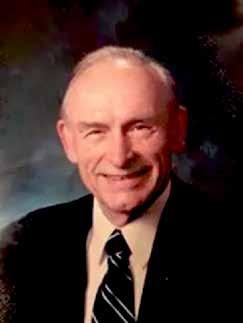
Paul J. Reiss died on Feb. 28 at the age of 93 in Lake Placid, NY, his precious birthplace, with two sons by his side.
He was an accomplished educator, administrator, and generous community leader and volunteer. He was a humble intellectual with a gentle and gracious manner. A man of deep Christian faith, he was disciplined, thoughtful, and generous to people of diverse ages and backgrounds with his time, guidance, and attention. He was especially devoted to Rosemary, his best friend and late wife of 67 years, and a hands-on partner in raising their 9 children. Dr. Reiss was the third of Daisy and Julian Reiss’s six children.
After graduation from LaSalle Military Academy in Long Island, he attended St Michael’s College, spent a year in seminary, and then transferred to Holy Cross College where he earned his BA. He received his Master’s in Sociology at Fordham Univer-
sity and went on to Harvard to work on his Ph.D. It was there he met Emmanuel College student Rosemary Agnes Donahue, marrying her in 1955.
Taking a job to teach sociology at Marquette University in 1957, they moved their family to Wisconsin. In 1959, Paul took over a new summer camp in Lake Placid for inner-city NYC middle school boys. For the next 50+ years, honoring his father’s request, he sustained and administered all aspects of the program, and added a girls’ program in 1993. The summer camp, together with the Nativity Missions Center in Manhattan, served as the model for the development of a nationwide network of over 50 Nativity Miguel schools. The Reiss Foundation camps now include a St Agnes Day Camp and continue to run under the leadership of the family members of the next two generations.
In 1963, Dr Reiss was appointed to the faculty of Fordham and became Chairman of the Sociology Dept, and Dean of the College at Lincoln Center and the Academic VP in the early 1970’s. For over a decade, he served as the Executive Vice President of Fordham University, attending all aspects of a diverse university with multiple campuses.
A lover of the outdoors, Paul taught his kids to ski, and he enjoyed XC skiing through is mid 80’s. He taught his children to play tennis, paddle, hike, and sail. He abundantly provided his children and grandchildren encouragement, wise counsel, and support for all their athletic, academic, and professional endeavors.
Paul played piano by ear, often delighting friends, family, and strangers. He sang with gusto, including the St Anges choir. He served as a lay reader and eucharistic minister at his cherished St Agnes Church.
Dr. Reiss became President of St Michael’s College in Vermont in 1985, resumed teaching sociology, and committed

to being a part of the campus community in part by building a President’s home on campus and donating it to the college. He oversaw the renovation or new construction of 80% of St Mike’s buildings and facilities, including a library, and information technology, and led the faculty in recommitting to its mission and catholic identity.
Dr Reiss was a representative to the 1989 Vatican consultation that refined the role of religion in Catholic higher education. He was honored to meet Pope John Paul II and invite him to come ski in Vermont. Named 1996 Vermont Distinguished Citizen of the Year by the Green Mountain Council of the Boy Scouts, Paul was awarded honorary degrees from Middlebury College and Showa University of Japan. His published works in sociology cover family issues, higher education, and moral values in Catholic education.
Dr Reiss retired from St Michael’s College in 1996. He and Rosemary kept a home where they could remain active on campus and in the larger Burlington community. Paul published a book, “Dad,” about the life of his beloved father, Julian J Reiss, which covered both youthful adventures and Julian’s pioneering work in profit sharing, social justice, and civil rights.
Dr Reiss co-founded the Mercy Care of the Adirondacks in 2007 and was its first president, later becoming the Chairperson on the board. He was a friendship volunteer
for over 10 years. In 2010, he received the Liberty Bell Award from the Essex County Bar Association.
As president of the Lake Placid Sinfonietta and board member for many years, He and Rosemary regularly attended the Wednesday evening concerts in the park with grandchildren or the Sunday concerts at the center.
Paul Reiss is survived by three daughters, Cathy (C.C) Sloan, Julia (Jeff) DeSantis, and Martha (Ted) Acworth; six sons, Paul (Joanne), Greg (Liza) Mark, David, Steve (Shannon), and John (Marybeth), 30 grandchildren, 10 great-grandchildren, many nieces and nephews and his brother Peter G. Reiss and sister Patricia (Patti) Brooks. Paul was predeceased by brothers Thomas and Robert Reiss and sister Mary Watson.
Donations in Paul’s memory may be made to Mercy Care for the Adirondacks or St Michael’s College/Nativity Scholarship Fund.
Calling hours will be held March 15 from 6-8 p.m. at the M. B. Clark, Inc., Funeral Home, Saranac Ave., Lake Placid, NY. A Mass of Christian Burial will be celebrated March 16 at 10 a.m. at Saint Agnes Church, Hillcrest Ave., Lake Placid, NY. Rev. John Yonkovig will officiate.
Visit www.mbclarkfuneralhome.com to share a memory, upload a photograph, sign the online guest book, or leave condolences to be added to the memorial tribute book for the family to cherish.






Are you a weather-watcher? It’s helpful to know what the conditions will be outside when we’re making plans. With smartphones and weather apps created by weather experts, it’s easier than ever to check the forecast.
How do the experts know what the weather will be like? This week, The Mini Page looks at weather forecasting.
Meteorologists (MEE-tee-or-ALL-uh-jists) are scientists whose job it is to let us know all about the weather.
Meteorology is the study of the atmosphere and all the conditions that produce our weather.
The forecasts that meteorologists make affect people’s lives and well-being. For example, forecasts tell:
• pilots what flight plans to make.
• farmers when to plant crops.
• families to evacuate their homes when a hurricane is coming.
• kids when they need to bundle up to go outside.
Most meteorologists work for the National Weather Service, an agency of the U.S. government. Other meteorologists work for private companies that provide special reports or for TV stations.
The weather service has people at work every hour of the day and night at 122 weather-forecasting offices around
Mini Fact: The GOES16 weather satellite launched in late 2016.
the country. Each office is responsible for reporting what is going on in its own area. Experts use powerful supercomputers that can create weather maps.

Meteorologists forecast the weather in the troposphere (TROP-uh-sfeer), or the layer of air closest to us. It is the air we breathe and where most of our weather takes place. This layer goes up 5 to 10 miles. It varies in different parts of the world.
Meteorologists are interested in:
• The temperature, or how cold or hot the air is.
• The humidity, or how much moisture is in the air.
• The wind, or how fast the air is moving.
• Air pressure, or the weight of the air around us.
These conditions are collected by doppler radar, radiosondes (packages of equipment attached to balloons), weather satellites, buoys and other instruments. This information is processed by computers and analyzed by meteorologists.

Words that remind us of meteorology are hidden in this puzzle. Some words are hidden backward or diagonally, and some letters are used twice. See if you can find:
Next Week: Spring equinox

Are you intrigued by weather? Most meteorologists have a college education. They study:
• Math, so they can figure out what computer-generated figures mean.
• Science, so they can observe what is happening and use this information to make predictions.
• Computer science, so they can tell computers how to interpret the weather data they receive.
• Chemistry, so they will know how gases in the atmosphere (such as carbon dioxide) affect the weather.
• Physics, so they can understand the movements of the Earth’s air.
Meteorologists’ predictions are not always right, but technology and weather forecasting techniques continue to improve.

Wilson: What happens when it rains cats and dogs?

Wynona: You have to be careful not to step in a poodle!

for private companies that provide special reports or for TV stations.
The weather service has people at work every hour of the day and night at 122 weather-forecasting offices around
This information is processed by computers and analyzed by meteorologists.

Words that remind us of meteorology are hidden in this puzzle. Some words are hidden backward or diagonally, and some letters are used twice. See if you can find:
AIR, APPS, ATMOSPHERE, DOPPLER, EXPERT, FORECAST, HUMIDITY, MATH, METEOROLOGIST, OFFICE, PRESSURE, RADIOSONDE, SCIENCE, SERVICE, TEMPERATURE, TROPOSPHERE, WEATHER, WIND.
You’ll need:
• 1 (8-ounce) package refrigerated crescent rolls
• jelly of your choice
What to do:
1. Open package and lay rolls flat on a cookie sheet.
2. Place 1 heaping teaspoon of jelly in the center of each of four crescents.

At the library:
• “Weather Watch: Forecasting the Weather” by Ellen Labrecque
• “Weather Prediction” by Clara MacCarald
Wilson: What happens when it rains cats and dogs?

Wynona: You have to be careful not to step in a poodle!

3. Place remaining four crescents on top and seal all around with a fork to make triangles.
4. Cook in oven according to package directions.
5. Remove from oven. Serve warm. Makes 4 triangles.
* You’ll need an adult’s help with this recipe.


With around 57 million people engaging in bird feeding in the U.S. each year, new research is exploring how the activity not only benefits the birds, but improves human well-being too. Ashley Dayer of the Department of Fish and Wildlife Conservation at Virginia Tech said people participating in the new study, FeederWatch, “are not only reporting what they see at their bird feeders, but also their emotional responses to it.” She adds that feeding birds is a great way to maintain a connection to wildlife.
adapted with permission from Earthweek.com
Find the weather report in your local newspaper.
Teachers: Follow and interact with The Mini Page on Facebook!



Dear Savvy Senior,
Does Medicare offer any financial assistance programs to help seniors with their medication costs? I recently enrolled in a Medicare drug plan, but I take some expensive medications that have high out-of-pocket costs and need some help.
Living on a Shoestring
Dear Living,
Yes, there’s a low-income subsidy program called ‘Extra Help’ that assists Medicare beneficiaries on a tight budget by paying for their monthly premiums, annual deductibles, and co-payments related to their Medicare (Part D) prescription drug coverage.
The Extra Help benefit is estimated to be worth about $5,300 per year. Currently over 13 million people are receiving this subsidy, but there’s around 3 million more who may qualify for it but don’t realize it.
The amount of financial assistance you would receive depends on your income and assets. If you qualify, you’ll pay no premium or deductible (unless receiving a partial subsidy), and no more than $4.50 for
 By Jim Miller
By Jim Miller
each generic drug or $11.20 for each brand-name drug your plan covers.
To get the subsidy, your resources must be limited to $17,220 or $34,360 for married couples living together. Bank accounts, stocks, bonds, mutual funds and IRAs count as assets, but your home, vehicle, personal belongings, life insurance and burial plots do not.
Also, your annual income must be limited to $22,590 for an individual or $30,660 for married couples.
From Green Burial to Pet Memorials, our goal is to provide the services and care you need.
• Burial/Cremation Services

• Green Burials
• Traditional Funerals
• Memorial Services
• Pre-arranged
•
•
If you support a family member who lives with you, or you live in Alaska or Hawaii, your income can be higher. In addition, the government won’t count any money if you receive help for household expenses like food, rent, mortgage payments, utilities and property taxes.
There are three ways to see if you qualify and apply for Extra Help: online at SSA.gov/medicare/ part-d-extra-help; by calling Social Security at 800-772-1213; or by visiting your local Social Security office.
The application form is easy to complete, but you will need your Social Security number and information about your bank balances, pensions and investments. Social Security will review your application and send you a letter within a few weeks letting you know whether you qualify.
If you don’t qualify for Extra Help, you may still be able to get help from a state pharmacy assistance program or a patient assistance program. Visit NeedyMeds. org to search for these programs.
If you’re eligible for Extra Help, you may also qualify for help with your other Medicare expenses through your state’s Medicare Savings Program.
State Medicaid programs partner with the federal government, so income and asset qualifications vary depending on where you live. Medicare Savings Programs will pay your entire Medicare Part B premium each month. And in some cases, they may also pay your Medicare deductibles, coinsurance and copayments, depending on your income level. To find out if you qualify, contact your state Medicaid office.
You can also get help through your State Health Insurance Assistance Program (SHIP), which provides free Medicare counseling in person or over the phone. Visit ShipHelp.org or call 877-839-2675 to locate a counselor in your area.
Send your senior questions to: Savvy Senior, P.O. Box 5443, Norman, OK 73070, or visit SavvySenior.org.
Ten members of the Vermont Army National Guard departed for the High North of Canada on Feb. 28, joining 18 other service members from New Hampshire, Virginia and Alaska for Arctic training exercises with the Canadian Army (Guerrier Nordique).
They were due to arrive in Resolute Bay on the Arctic Ocean on March 4.
“This is an opportunity for interoperability with various U.S. forces to develop our skills and establish best practices to operate and survive in these austere conditions,” said U.S. Army Lt. Col. Jason Beams, commander of the Army Mountain Warfare School in Jericho. “The 2nd Canadian Division and 35th Brigade
Group have been great partners and are very knowledgeable. I’m looking forward to another great exercise this year and continuing to build upon our partnership.”
The Vermont National Guard started participating in the Canadian led training event in 2012. It provides guard members with experience operating and surviving in the extreme climate of the High Arctic. The exercises take place in challenging conditions in a joint operating environment. The lessons learned are brought back to units across the U.S. military and help to inform future Arctic focused decision-making, Vermont Guard Spokesman Capt. Mike Arcovitch said.

Feb. 18 at 4:38 a.m. — Following a traffic stop, a male was issued a citation to appear in court for suspicion of DUI.
Feb. 18 at 2:40 p.m. — Retail theft reported at Marshalls. Two males were issued citations to appear in court for retail theft.
Feb. 18 at 3:24 p.m. — Assisted with moving debris out of the roadway on Old Stage Road.
Feb. 19 at 5:40 p.m. — Retail theft reported at Dick’s Sporting Goods. Two females had active arrest warrants. One was transported to the correctional facility and the other was issued a citation to appear in court.
Feb. 19 at 10:25 p.m. — Following a motor vehicle crash, a female was issued a citation to appear in court for suspicion of DUI.
Feb. 20 at 3:49 a.m. — Assisted Williston Rescue with gaining entry into a residence on White Birch Lane.
Feb. 21 at 11:50 a.m. — Retail theft reported at LL Bean. Male was issued a citation to appear in court for retail theft.
Feb. 21 at 2:02 p.m. — Report of vehicles broken into at Walmart. Unknown if anything was taken.
Feb. 22 at 11:23 a.m. — Report of vandalism at Majestic 10. Case is still under investigation.
Feb. 22 at 12:49 p.m. — Retail theft reported at Staples. Female had an active arrest warrant and was transported to court. She was
also issued a citation to appear in court for retail theft.
Feb. 22 at 1:34 p.m. — Retail theft reported at Hannaford. Male was located and issued a citation to appear in court for retail theft.
Feb. 23 at 4:55 a.m. — Assisted Williston Rescue with a possible overdose. Male was transported to the hospital for evaluation.
Feb. 23 at 8:15 a.m. — Retail theft reported at Walmart. Male issued a citation to appear in court for retail theft.
Feb. 23 at 9:53 a.m. — Assisted with an ongoing landlord and tenant issue on Porterwood.
Feb. 23 at 12:03 p.m. — Assisted Department of Children and Families with home visit.
Feb. 23 at 12:40 p.m. — Stolen vehicle reported from UHaul. Vehicle was recovered the next day.
Feb. 24 at 1:18 a.m. — Following a short pursuit, a male was issued a citation to appear in court for suspicion of DUI, eluding and negligent operation.
Feb. 24 at 10:55 a.m. — Assisted male with a flat tire on North Williston Road.
Feb. 24 at 9:00 p.m. — Counterfeit money found at Walmart.
Officers also conducted 17 traffic stops and responded to eight alarm activations and 12 motor vehicle crashes during this time frame.

• In 1876, Alexander Graham Bell received the patent for the telephone.
• In 1936, German troops reoccupied the Rhineland, defying the Treaty of Versailles.
• In 1965, state troopers forcefully broke up 600 civil rights protesters on “Bloody Sunday” in Selma, Alabama.
• In 1985, the song “We Are the World” was released worldwide, with sales to benefit African famine relief.
• In 2009, the Kepler space observatory, designed by NASA to discover Earthlike planets, was launched from Cape Canaveral, Florida.
• Astronomers at the Harvard-Smithsonian Center for Astrophysics used data from the Kepler space observatory to estimate that at least 17 billion Earth-sized exoplanets exist in the Milky Way galaxy.
1 gliding on a frozen pond (7)
2 walking on banks (11)
3 ice rink game with a ball (5)
4 sport with stones and brooms (7)
5 Montreal Canadiens’ sport (6)
6 downhill diversion (8)
7 Bode Miller ’s sport (6) ’sodayT
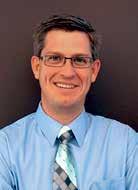
We’re proud of our smiles! We believe that our
with us will always leave you with a beautiful smile.


Puzzle found on page 21 SUDOKU
Puzzle found on page 21

TOWN OF WILLISTON DEVELOPMENT REVIEW BOARD AGENDA
Tuesday, March 12, 2024 – 7:00 PM
Town Hall Meeting Room (Town Hall, 7900 Williston Road, use rear entrance) or Zoom Meeting ID 846 5863 3532 on zoom.us/join or call 1-646-558-8656
Public Forum
Public Hearing
DP 20-15.1 Kevin Mazuzan requests discretionary permit review of a proposed amendment to the conditions of DP 20-15, a 2-lot subdivision at 1120 Butternut Road in the Agricultural/Rural Zoning District (ARZD).
DP 24-16 Pre-App Yasmin Tayeby requests pre-application review of a proposed 2-lot subdivision to create (1) 2.58-acre parcel for the existing dwelling and (1) 1.2-acre parcel for a proposed residential dwelling at 2255 Mountain View Road in the Residential Zoning District (RZD).
DP 24-11 Patrick O’Brien requests discretionary permit review of the proposed ±80,600 SF commercial ministorage facility at 269 Shunpike Road in the Industrial Zoning District West (IZDW).
EMAILED
There is no better time to join our Team!
There is no better time to join our Team!

There is no better time to join our Team!
There is no better time to join our Team!
There is no better time to join our Team!
North eld Savings Bank, founded in 1867, is the largest LOCAL BANK in Vermont. We are committed to providing a welcoming work environment for all.
Northfield Savings Bank, founded in 1867, is the largest LOCAL BANK in Vermont. We are committed to providing a welcoming work environment for all
Northfield Savings Bank, founded in 1867, is the largest LOCAL BANK in Vermont. We are committed to providing a welcoming work environment for all
Northfield Savings Bank, founded in 1867, is the largest LOCAL BANK in Vermont. We are committed to providing a welcoming work environment for all
Consider joining our team as a Community Banker at our Taft Corners or Richmond location!
Northfield Savings Bank, founded in 1867, is the largest LOCAL BANK in Vermont. We are committed to providing a welcoming work environment for all
Consider joining our team as a Community Banker at our Taft Corners or Richmond location!
Consider joining our team as a Community Banker at our Taft Corners or Richmond location!
Auction Closes: Tuesday, March 12 @ 10AM Location: Burlington, VT





DP 23-13 Leo & Mona Boutin request discretionary permit review of the proposed 3-lot subdivision to create (1) 29.5-acre parcel for protected open space, (1) 7.5-acre parcel for the existing home at 1607 Old Creamery Road, (1) 2.3-acre parcel for the existing home at 1513 Old Creamery Road in the Agricultural/Rural Zoning District (ARZD).
Communication, Final Plans and Other Business
Minutes of February 27, 2024
Adjourn
Relevant Skills: Customer Service, Cash Handling (we’ll train you!) Even better… if you have prior banking experience, we encourage you to apply!
Consider joining our team as a Community Banker at our Taft Corners or Richmond location!
Preview Auction: Monday, March 11 from 11AM-1PM • By Appointment.
Project details and site plans are available on the website, town.williston.vt.us, under “Public Records and Documents”, then “Agendas & Minutes”, and “Development Review Board”. Contact Planning & Zoning Office for more information: 802-878-6704 or email planning@willistonvt.org
Relevant Skills: Customer Service, Cash Handling (we’ll train you!)
BID NOW ONLINE @ THCAuction.com
TODAY’S DATE: 3/01/2024
Relevant Skills: Customer Service, Cash Handling (we’ll train you!) Even better… if you have prior banking experience, we encourage you to apply!
Even better… if you have prior banking experience, we encourage you to apply!
Relevant Skills: Customer Service, Cash Handling (we’ll train you!)
If you are 18 or older and have a high school diploma, general education (GED) degree, or equivalent, consider joining the NSB Team!
Even better… if you have prior banking experience, we encourage you to apply!
If you are 18 or older and have a high school diploma, general education (GED) degree, or equivalent, consider joining the NSB Team!
If you are 18 or older and have a high school diploma, general education (GED) degree, or equivalent, consider joining the NSB Team!
Opportunity for Growth
If you are 18 or older and have a high school diploma, general education (GED) degree, or equivalent, consider joining the NSB Team!
Opportunity for Growth
Opportunity for Growth
Auction Closes: Monday, March 18 @ 10AM Location: South Burlington, VT
NAME OF FILE: 03072024_WO DATE(S) TO RUN: 3/07/2024

NSB has training opportunities to engage employees and assist with professional development within our company.
NSB has training opportunities to engage employees and assist with professional development within our company. The average years of service for an NSB employee is 9! If you’re looking for a career in an environment that promotes growth, join our team!
What NSB Can Offer You
What NSB Can Offer You
NSB has training opportunities to engage employees and assist with professional development within our company. The average years of service for an NSB employee is 9! If you’re looking for a career in an environment that promotes growth, join our team!
What NSB Can Offer You
NSB has training opportunities to engage employees and assist with professional development within our company. The average years of service for an NSB employee is 9! If you’re looking for a career in an environment that promotes growth, join our team!
The average years of service for an NSB employee is 9! If you’re looking for a career in an environment that promotes growth, join our team!
What NSB Can Offer You
Competitive compensation based on experience. Wellrounded benefits package. Profit-Sharing opportunity. Excellent 401(k) matching retirement program. Commitment to professional development. Opportunities to volunteer and support our communities. Work -Life balance!
Competitive compensation based on experience. Wellrounded benefits package. Profit-Sharing opportunity. Excellent 401(k) matching retirement program. Commitment to professional development. Opportunities to volunteer and support our communities. Work -Life balance!
Please send an NSB
Competitive compensation based on experience. Wellrounded benefits package. Profit-Sharing opportunity. Excellent 401(k) matching retirement program. Commitment to professional development. Opportunities to volunteer and support our communities. Work -Life balance!
Competitive compensation based on experience. Wellrounded benefits package. Profit-Sharing opportunity. Excellent 401(k) matching retirement program. Commitment to professional development. Opportunities to volunteer and support our communities. Work -Life balance!





Preview Auction: Thursday, March 14 from 11AM-1PM By Appointment.
THCAuction.com 800-634-SOLD
SIZE OF AD: 1/8 page (4” x 5”) EMAILED TO: Rick@Willistonobserver.com
Publishes in Williston Observer
SECTION: Auctions PO# 1558/1568
Please send an NSB Application & your resume in confidence to: Careers@nsbvt.com
Application & your resume in confidence to: Careers@nsbvt.com
Please send an NSB Application & your resume in confidence to: Careers@nsbvt.com
Please send an NSB Application & your resume in confidence to: Careers@nsbvt.com


Equal Opportunity Employer / Member FDIC
Equal Opportunity Employer / Member FDIC
Equal Opportunity Employer / Member FDIC
Equal Opportunity Employer / Member FDIC

In print and online: we’re your neighbors, committed to keeping you informed on what’s going on in Williston.


















